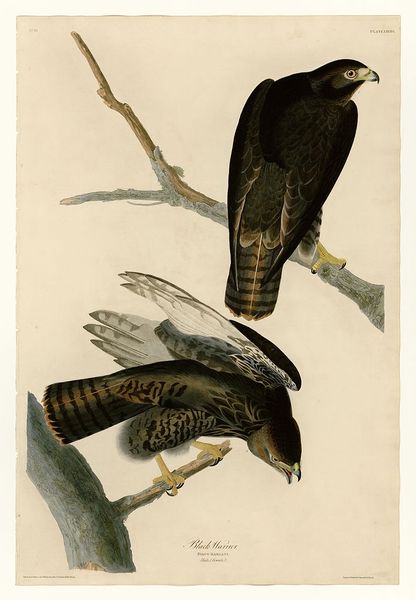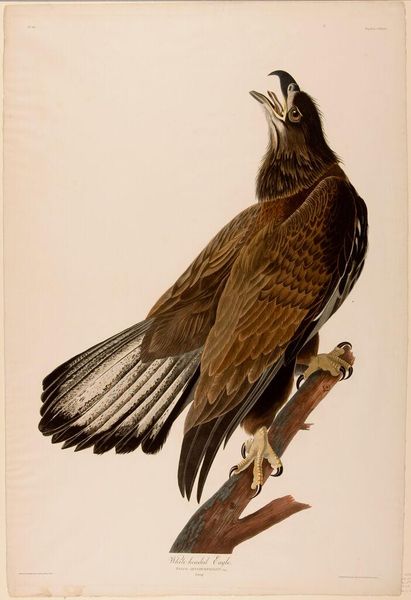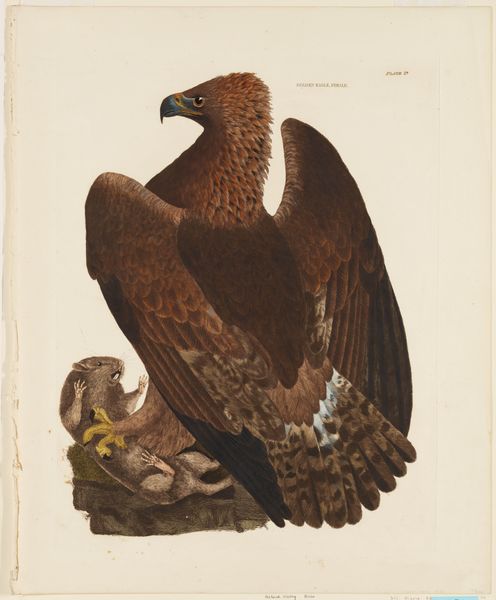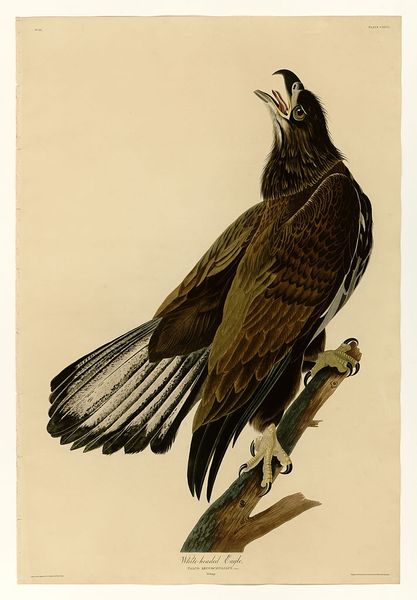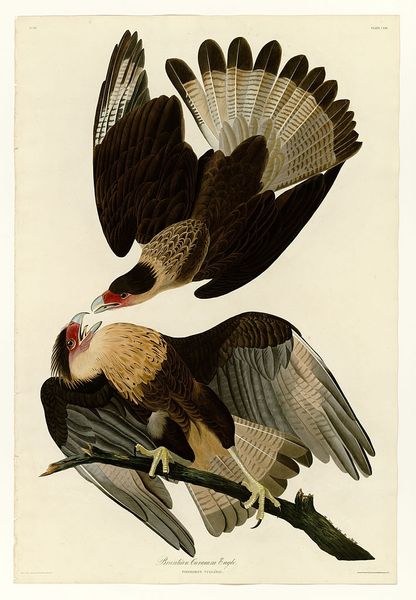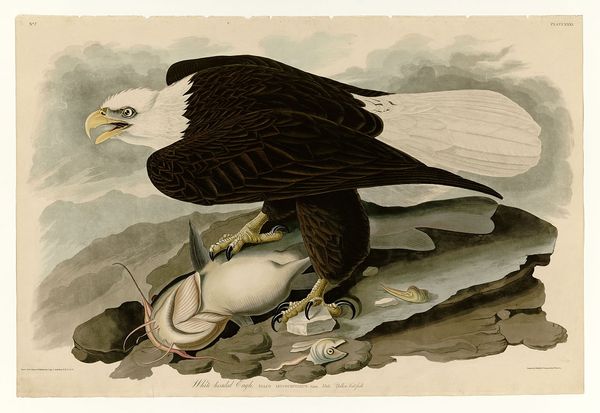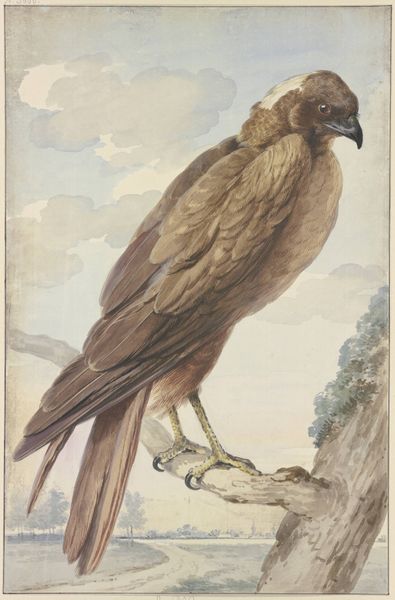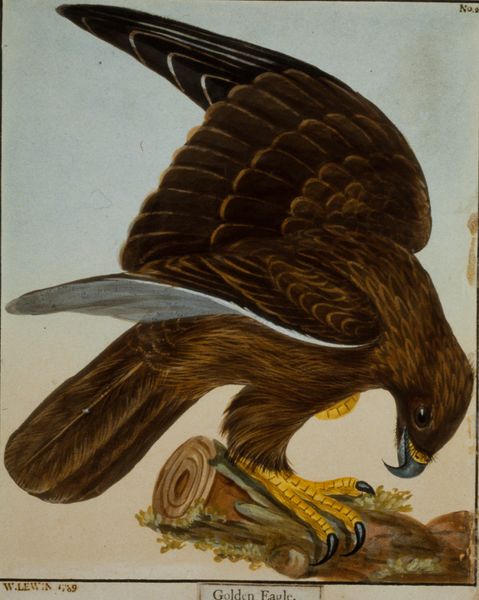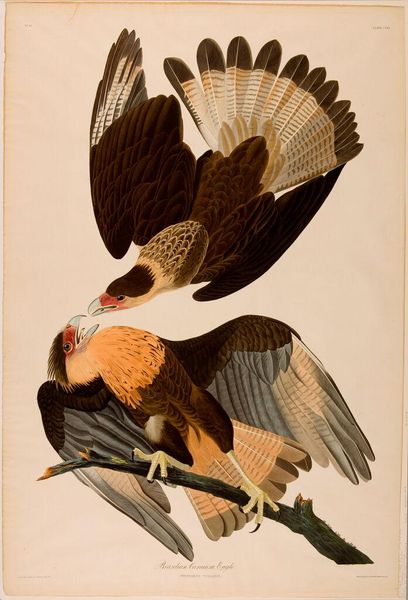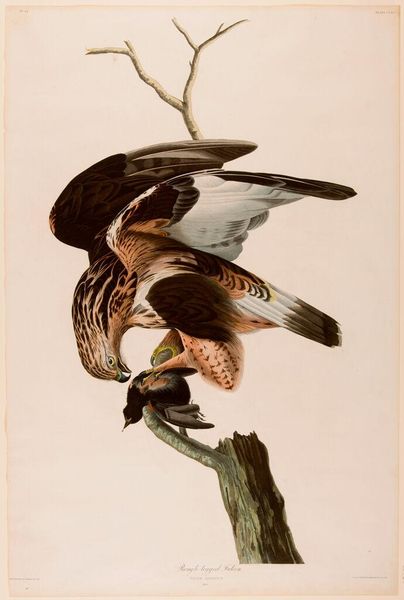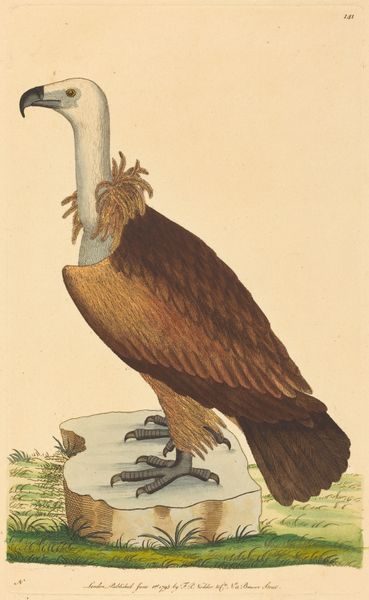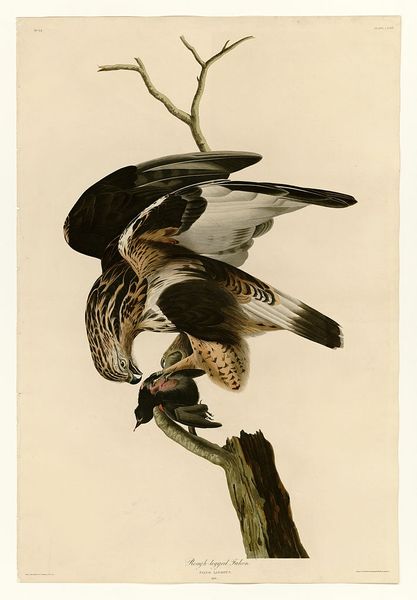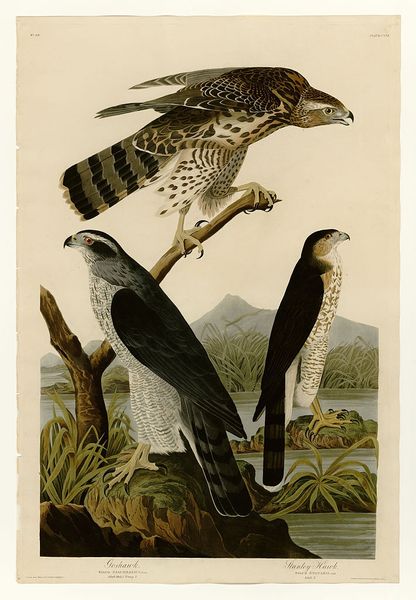
White Headed Eagle (Haliaetus leucocephalus) Possibly 1832 - 1837
0:00
0:00
print, watercolor
#
portrait
# print
#
watercolor
#
animal portrait
#
watercolour illustration
#
watercolor
Dimensions: sheet: 54 x 36 cm (21 1/4 x 14 3/16 in.)
Copyright: National Gallery of Art: CC0 1.0
Curator: Edward Lear's "White Headed Eagle" – believed to have been made between 1832 and 1837 – captures two American bald eagles through watercolour and printmaking. It’s striking, isn’t it? Editor: Yes, almost severe. The detail is captivating, but I immediately think about the loaded symbolism of the eagle and its ties to power, colonialism, and even appropriation. It looms large. Curator: Let's not forget Lear’s deep involvement in ornithology, though. Examining the layering of watercolors with the lithographic printing, the print provides scientific data, like an ornithological field study, with precise detailing in the plumage and the eagles' talons. This lithographic print allowed mass distribution of Lear's detailed studies to reach a wider audience. Editor: And within those layers of color, and mass distributions we must not overlook the larger picture, beyond the individual avian specimen. We are dealing with the cultural implications and narratives interwoven with the representation of this animal. Considering how deeply rooted the bald eagle is in American national identity, and its role in masking oppressive systems makes me pause. Curator: Yes, its symbolism has certainly evolved. Consider the artist's labour as well – the sourcing of materials, the printing process. I find myself thinking about the distribution networks of the time. Was this for a select audience or widely available? This speaks to the social reach of natural history illustration. Editor: Absolutely, let's not forget the Indigenous perspectives. Before its appropriation as a national symbol, the eagle held sacred status in many Indigenous cultures, representing respect and freedom. So in the end, who is the artwork serving in its construction and who is being exploited? Curator: Food for thought indeed. These prints open up many routes of intellectual thought when understanding the full making of an image. Editor: A vital point, I agree! Let’s move forward armed with the questions it raises.
Comments
No comments
Be the first to comment and join the conversation on the ultimate creative platform.
